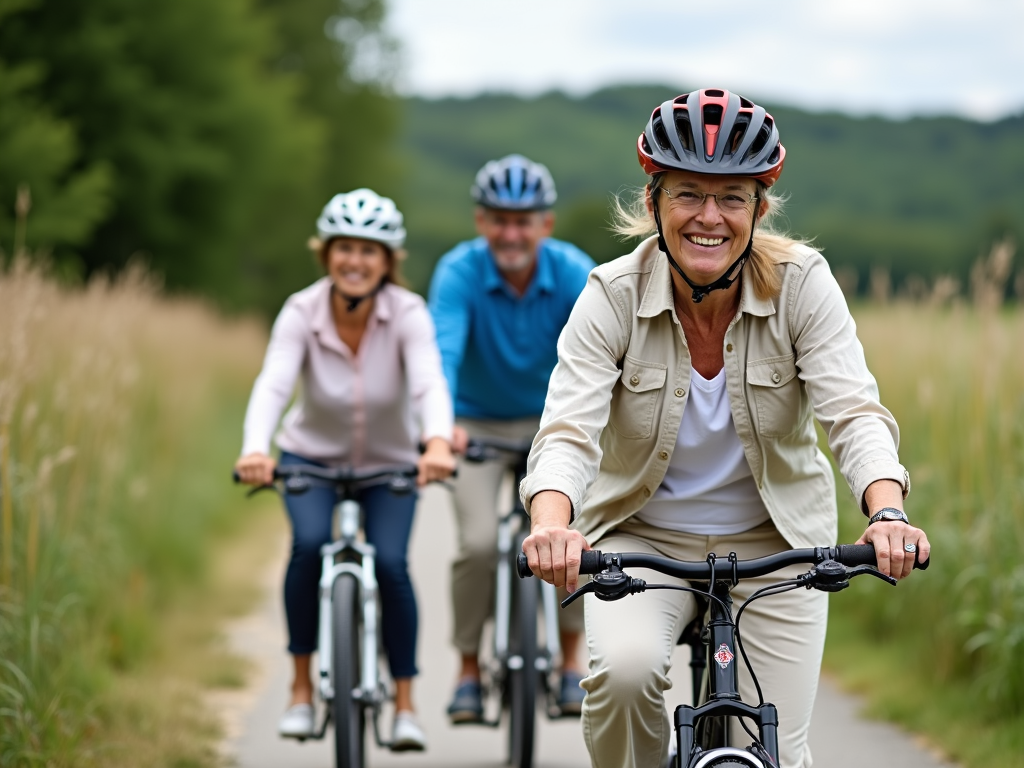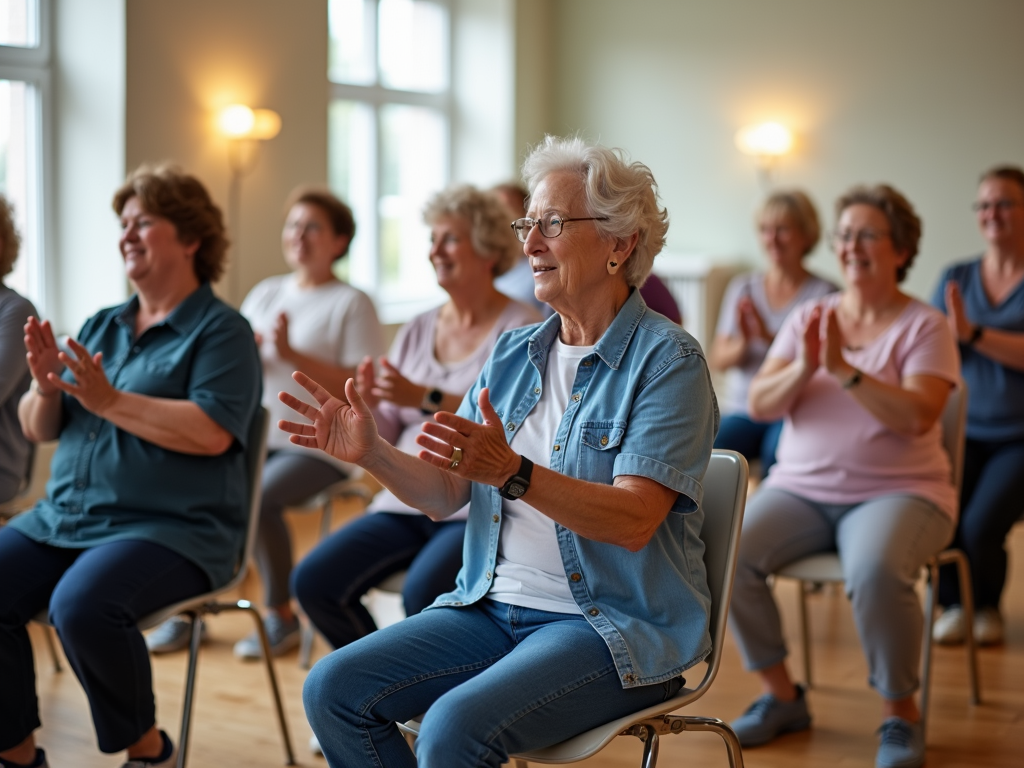Staying active is crucial for seniors to maintain their health and independence. As we age, our bodies undergo various changes, but regular exercise, particularly cardio workouts, can help mitigate many of these changes. Cardio, short for cardiovascular exercise, refers to any activity that increases your heart rate and improves the efficiency of your heart, lungs, and circulatory system. For seniors, engaging in cardio workouts can lead to numerous benefits, including improved heart health, better weight management, enhanced mental well-being, and increased longevity.
In this comprehensive guide, we'll explore the best cardio workouts for seniors that are not only effective but also safe and enjoyable. Whether you're a seasoned exerciser or just starting out, these workouts can be tailored to your fitness level and preferences. From walking and swimming to dancing and chair aerobics, there's something for everyone. So, let's dive in and discover how you can stay active and healthy with these expert-recommended cardio exercises.

Cardio exercises are particularly beneficial for seniors because they target the cardiovascular system, which tends to weaken with age. Here are some key benefits:
-
Improved Heart Health: Regular cardio strengthens the heart muscle, improves blood circulation, and helps lower blood pressure. According to the American Heart Association, engaging in at least 150 minutes of moderate-intensity aerobic activity per week can significantly reduce the risk of heart disease, the leading cause of death among older adults.
-
Weight Management: Cardio helps burn calories and can aid in maintaining a healthy weight, which is crucial for preventing obesity-related conditions like diabetes and joint problems.
-
Mental Health Benefits: Exercise releases endorphins, which are natural mood boosters. Cardio can help reduce symptoms of depression and anxiety, improve sleep quality, and enhance cognitive function.
-
Increased Bone Density: Weight-bearing cardio activities like walking can help maintain bone density, reducing the risk of osteoporosis and fractures.
-
Better Balance and Coordination: Many cardio exercises involve movements that improve balance and coordination, which are essential for preventing falls—a common concern for seniors.
-
Social Interaction: Participating in group cardio activities, such as dance classes or walking groups, can provide opportunities for social engagement, which is vital for emotional well-being.
By incorporating cardio into your routine, you can enjoy these benefits and more, leading to a higher quality of life.
It's important to approach cardio exercises with caution, especially if you're new to exercise or have existing health conditions. Here are some detailed safety tips:
-
Consult Your Doctor: Before starting any new exercise program, schedule a check-up with your healthcare provider. They can assess your fitness level and provide personalized recommendations.
-
Start Slowly: Begin with low-intensity activities and short durations. For example, start with 5-10 minutes of walking and gradually increase the time and intensity as your fitness improves.
-
Listen to Your Body: Pay attention to how you feel during and after exercise. If you experience pain, dizziness, shortness of breath, or any unusual symptoms, stop immediately and seek medical advice.
-
Stay Hydrated: Drink water before, during, and after your workout to prevent dehydration, which can be more common in older adults.
-
Choose Appropriate Footwear: Wear supportive shoes that fit well to reduce the risk of foot injuries and falls.
-
Avoid Extreme Conditions: Exercise in moderate temperatures to prevent heatstroke or hypothermia. If exercising outdoors, check the weather and dress accordingly.
-
Consider Supervision: If you're unsure about how to perform certain exercises, consider working with a certified personal trainer who specializes in senior fitness.
Remember, the goal is to improve your health, not to push yourself to the point of injury. Take it slow, be consistent, and celebrate your progress.

Top Cardio Workouts for Seniors
1. Walking
Walking is often touted as the perfect exercise for seniors, and for good reason. It's low-impact, can be done almost anywhere, and requires no special equipment other than a good pair of walking shoes.
How to Get Started with Walking:
-
Set a Goal: Aim for at least 30 minutes of brisk walking most days of the week. If 30 minutes seems daunting, start with 10-minute walks and gradually increase the duration.
-
Find a Routine: Try to walk at the same time each day to establish a habit. Morning walks can be invigorating, while evening walks can help you unwind.
-
Track Your Progress: Use a pedometer or smartphone app to count your steps. Many experts recommend aiming for 10,000 steps a day, but any increase in activity is beneficial.
-
Make It Social: Invite a friend or join a walking group. Not only does this make walking more enjoyable, but it also provides accountability.
Benefits of Walking:
-
Cardiovascular Health: Walking strengthens the heart and improves circulation.
-
Weight Control: Regular walking can help maintain a healthy weight.
-
Mental Well-being: Walking, especially in nature, can reduce stress and improve mood.
-
Joint Health: As a low-impact activity, walking is gentle on the joints while still providing exercise.
Modifications for Seniors:
-
Use Support: If balance is an issue, use a walking stick or trekking poles.
-
Choose Safe Routes: Walk on flat, even surfaces like sidewalks or tracks to minimize the risk of tripping.
-
Interval Walking: Alternate between faster and slower paces to add variety and challenge.
Walking is versatile and can be adapted to fit your needs. Whether you're strolling through your neighborhood or hiking on a trail, walking is a fantastic way to stay active.
2. Swimming
Swimming is another excellent cardio workout for seniors. The buoyancy of water reduces stress on the joints, making it ideal for those with arthritis or other joint issues.
How to Get Started with Swimming:
-
Find a Pool: Look for a local community pool or gym with a pool. Some facilities offer senior swim times or water aerobics classes.
-
Start Slowly: Begin with 10-15 minutes of swimming or water walking, and gradually increase your time in the water.
-
Learn Proper Technique: If you're new to swimming, consider taking a few lessons to learn proper strokes and breathing techniques.
-
Use Equipment: Kickboards, pool noodles, and water weights can add variety to your workout.
Benefits of Swimming:
-
Full-Body Workout: Swimming engages multiple muscle groups, providing both cardio and strength training.
-
Low Impact: The water supports your body weight, reducing strain on joints.
-
Improved Lung Capacity: Swimming can enhance respiratory function.
-
Stress Relief: The rhythmic nature of swimming can be meditative and calming.
Modifications for Seniors:
-
Water Aerobics: If swimming laps isn't your thing, try water aerobics. These classes often include fun music and group activities.
-
Safety First: Always swim in a pool with a lifeguard, and never swim alone.
-
Temperature Matters: Ensure the pool is at a comfortable temperature to avoid muscle cramps or discomfort.
Swimming is not only a great workout but also a refreshing way to stay cool and active, especially during hot weather.

3. Cycling
Cycling is a fun and effective way for seniors to get their cardio in. Whether you prefer riding outdoors or using a stationary bike, cycling offers numerous health benefits.
How to Get Started with Cycling:
-
Choose the Right Bike: If you're buying a bike, look for one with a comfortable seat and upright handlebars. Stationary bikes are also a great option, especially for those with balance concerns.
-
Start with Short Rides: Begin with 10-15 minute sessions and gradually increase the duration and intensity.
-
Safety Gear: Always wear a helmet when cycling outdoors, and consider reflective clothing for visibility.
-
Find Scenic Routes: If cycling outdoors, choose bike paths or quiet streets with minimal traffic.
Benefits of Cycling:
-
Leg Strength: Cycling targets the quadriceps, hamstrings, and calves.
-
Cardiovascular Fitness: It gets your heart rate up and improves endurance.
-
Low Impact: Cycling is easier on the joints than running or high-impact aerobics.
-
Mental Health: The sense of freedom and exploration can boost mood and reduce stress.
Modifications for Seniors:
-
Recumbent Bikes: These bikes have a larger seat and backrest, providing better support and comfort.
-
Adjust Settings: Make sure the bike is adjusted to your height to prevent strain on your knees and back.
-
Group Rides: Joining a cycling group can make the activity more enjoyable and social.
Cycling is a versatile exercise that can be tailored to your fitness level and preferences. Whether you're pedaling through the park or spinning in a class, it's a great way to stay fit.

4. Chair Aerobics
For seniors with limited mobility or balance issues, chair aerobics offers a safe and effective way to get a cardio workout. All you need is a sturdy chair and some enthusiasm.
How to Get Started with Chair Aerobics:
-
Find a Class or Video: Many community centers and online platforms offer chair aerobics classes specifically designed for seniors.
-
Start with Basic Movements: Begin with simple exercises like seated marches, arm raises, and leg extensions.
-
Gradually Increase Intensity: As you get stronger, you can add light weights or resistance bands to your routine.
-
Stay Engaged: Focus on the movements and try to keep a steady rhythm.
Benefits of Chair Aerobics:
-
Accessibility: Can be done by almost anyone, regardless of fitness level or mobility.
-
Cardio and Strength: Provides both cardiovascular benefits and muscle strengthening.
-
Improved Flexibility: Many chair exercises include stretching components.
-
Convenience: Can be done at home, in a group setting, or even while watching TV.
Modifications for Seniors:
-
Choose the Right Chair: Use a chair without wheels and with armrests for added stability.
-
Listen to Your Body: If an exercise causes discomfort, modify it or skip it altogether.
-
Stay Hydrated: Keep water nearby and take breaks as needed.
Chair aerobics is a fantastic option for those who want to stay active without the risk of falls or excessive strain. It's also a great way to socialize if done in a group setting.

5. Dancing
Dancing is not only a great cardio workout but also a joyful way to express yourself and connect with others. From ballroom to line dancing, there are many styles to choose from.
How to Get Started with Dancing:
-
Pick a Style: Choose a dance style that interests you, such as salsa, swing, or even Zumba.
-
Take a Class: Look for dance classes specifically designed for seniors or beginners.
-
Practice at Home: Put on some music and dance around your living room. It's a great way to get moving and have fun.
-
Start Slowly: Begin with 10-15 minutes of dancing and gradually increase the time as you build stamina.
Benefits of Dancing:
-
Cardiovascular Health: Dancing elevates your heart rate and improves endurance.
-
Coordination and Balance: The movements involved in dancing can enhance your coordination and balance.
-
Mental Stimulation: Learning new dance steps can keep your mind sharp.
-
Social Interaction: Dancing with a partner or in a group can be a great way to meet new people.
Modifications for Seniors:
-
Low-Impact Styles: Opt for dances that are gentler on the joints, like waltz or foxtrot.
-
Take Breaks: Don't be afraid to sit out a song if you need to rest.
-
Use Support: If balance is an issue, hold onto a chair or rail while dancing.
Dancing is a wonderful way to combine exercise with creativity and social engagement. It's never too late to start dancing, and the benefits are well worth the effort.

How to Get Started
If you're new to cardio or haven't exercised in a while, it's important to ease into it. Here are some detailed steps to help you begin:
-
Set Realistic Goals: Start with small, achievable goals. For example, aim to walk for 10 minutes three times a week. Once that becomes comfortable, increase the duration or frequency.
-
Choose Enjoyable Activities: You're more likely to stick with exercises you enjoy. Try different activities to find what you like best.
-
Create a Schedule: Plan your workouts in advance and treat them like important appointments. Consistency is key to seeing results.
-
Warm Up and Cool Down: Always start with a 5-10 minute warm-up to prepare your body, and end with a cool-down to prevent injury.
-
Track Your Progress: Keep a journal or use an app to log your workouts. Seeing your improvement can be motivating.
-
Find a Buddy: Exercising with a friend can make it more fun and help you stay accountable.
-
Celebrate Milestones: Reward yourself for reaching your goals, whether it's with a new pair of walking shoes or a relaxing bath.
Remember, the most important thing is to get moving. Even small amounts of activity can make a big difference in your health and well-being.
Incorporating Cardio into Daily Life
Making cardio a part of your daily routine doesn't have to be time-consuming or complicated. Here are some practical ways to add more movement to your day:
-
Take the Stairs: Opt for stairs instead of elevators whenever possible.
-
Park Farther Away: When running errands, park at the far end of the parking lot to get extra steps.
-
Walk or Bike for Short Trips: If you're going somewhere close, consider walking or biking instead of driving.
-
Do Chair Exercises: While watching TV or sitting at your desk, do some seated leg lifts or arm circles.
-
Dance While Doing Chores: Put on some music and dance while cooking, cleaning, or folding laundry.
-
Garden: Gardening can be a great way to get some light cardio while enjoying the outdoors.
-
Play with Grandkids: If you have grandchildren, play active games with them like tag or hide-and-seek.
By finding creative ways to move more throughout the day, you can boost your overall activity level without needing to set aside large chunks of time for exercise.

In conclusion, cardio workouts are a vital component of a healthy lifestyle for seniors. They offer a wide range of benefits, from improved heart health and weight management to enhanced mental well-being and social interaction. By choosing activities that are safe, enjoyable, and suited to your fitness level, you can make exercise a regular part of your routine.
Remember to start slowly, listen to your body, and consult with your healthcare provider before beginning any new exercise program. Whether you prefer walking, swimming, cycling, chair aerobics, or dancing, there's a cardio workout out there for you. Stay active, stay healthy, and enjoy the journey to a more vibrant and fulfilling life.
Discuss Here